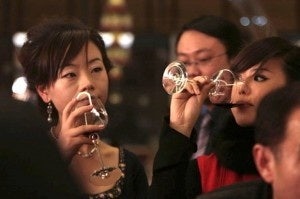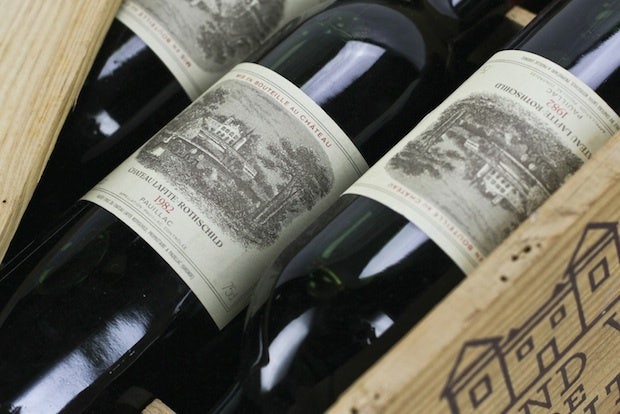Despite Booming Demand, Distribution Still Major Issue#

China’s maturing wine industry is not new news, with wine consumption doubling since 2005 and the country now the world's seventh-largest wine consumer. As more drinkers trade in bottles of beer or baijiu for glasses of wine, winemakers from around the world continue to look for new ways of tapping the market, from e-commerce to brick-and-mortar wine bars. Though the China "frenzy" of the past two years shows no clear sign of ending any time soon, this week senior analyst Marc Soccio of the Dutch bank Rabobank said that winemakers hoping to build their brands in China should take a deep breath before throwing their hat into the ring.
Following the release of Rabobank's first research document on China’s wine market, Soccio told The Drinks Business that China's market currently is plagued by a “gap” between “the headline volume figures for imported wine in China and the actual market where wine brands may safely operate.” Despite impressive specs from a macro-level -- wine consumption is now at 100 million cases per year, and mainland Chinese demand has helped Hong Kong become the world's top wine auction market -- the country continues to lag behind in important areas like distribution. As Soccio put it, “The wine is imported and distributed directly to contacts in businesses and the government in China. It’s not a channel where well-known brands tend to thrive, and such distributors don’t crave transparency.”
Lesser-known labels that have done well in tapping business or government demand have, Soccio admits, been more successful in direct distribution. But success in this field comes at the expense of brand-building, which may push brand owners to rethink their positioning strategy. Many have looked to get more involved in the retail and restaurant channels as well as working with larger distributors that rely on traditional channels, such as HoReCa. But this too can cause headaches for brands newer to the China market. Said Soccio, "Brand owners are frustrated by their distributors because they see this volume coming into the market but they are not seeing the growth [for themselves].”
Fundamentally, the current state of the wine market in China -- where domestic plonk rules the low-end, French Bordeaux and Burgundy dominates the high-end, and a slew of New World wineries (and some premium Chinese wineries) duke it out for the lucrative mid-range -- is unlikely to change for quite some time. For foreign winemakers hoping to benefit from the boom, it's important to work with a well-established distributor (such as Nanpu, ASC Fine Wines or Shanghai C&D) and be prepared to invest a great deal of time and money to support them. Identifying brand position and choosing a strategic pricing strategy that is high enough to reflect prestige but affordable enough for the aspirational consumer is also key for new entrants to the market, as well as smart use of social media.

Key findings from the new Rabobank wine report:#
Market#
:
- Chinese grape wine market: 1.4 billion liters in 2011 (up 14%)
- Foreign bottled wine: 241 million liters (17% of the total market).
- Foreign bulk wine: 120 million litres (but much of this can be accounted for in domestic production)
Taxation:#
- Bottled wine is subject to a 14% import tariff (20% for bulk wine)
- Bottle wine is also subject to a 17% VAT and 10% consumption tax
Consumers:#
- In 2011, each grape wine consumer drank on average 6 bottles of wine, according to Sinomonitor’s 2011 China Marketing and Media Study
- Half of heavy grape wine consumers (4 or more bottles in the last 6 months) lived in tier 1 cities.
- Wine is more likely to attract either younger, better-educated, wealthier and/or female consumers than baijiu or beer.
Distribution:#
- Total number of wine importers: 3,863 companies in 2011 (up 73% from 2010 and up 200% in 5 years). This figure is from estimates by China Customs.
- 97% of the importers handled less than 500 tonnes of wine in 2011, and accounted for almost 40% of the total import volumes.
